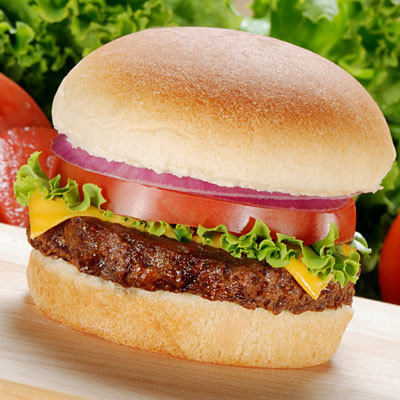What Is The Atkins Diet?
According to Atkins, calories are unimportant. The key to losing weight is to restrict the carbohydrates that you eat and force the body to turn to its stored fat as an energy source. As proof of this, proponents of the Atkins Diet point to the following facts derived from research:
* When the body doesn't have enough carbohydrate, it will use ketenes derived from fat as energy.
* You can eat more food and lose more weight on a low carbohydrate diet than you can on a low fat diet.
* You crave less food when you eat fewer carbohydrates.
* By eating fewer carbohydrates, people tend to eat fewer calories without counting them.
* The greater the difference between fat and carbohydrate, the greater the weight loss.
In short, if you restrict your intake of carbohydrates, you will most likely also restrict your intake of calories. By lowering your carbohydrate intake, you will encourage your body to turn to fat for energy.
The Atkins diet has provoked storms of controversy since it was first published. The recommendation to eat a high-protein, low-carbohydrate flew in the face of all the dietary recommendations by established medical institutions. The diet was denounced as unsafe, particularly if used as a life-long weight maintenance plan. Over the past five to ten years, there have been numerous studies that come down on both sides of the equation, and Atkins last version of the diet included the admission that calories do matter, and the advice to 'eat only enough to satisfy hunger'.
A typical menu for a meal on the Atkins Diet might include:
Portobello and Ricotta Crostini
Chicken Milanese over Spring Salad
Lemon Vinaigrette dressing
Warm Lentils and Celery
Raspberry Cheesecake in a Cup
The eating plan recommended by the Atkins diet contains very low portions of carbohydrates, deriving the majority of carbohydrates from vegetables high in fiber and low in carbs, and unrestricted portions of proteins, including high fat proteins like beef, pork and cheese.
Follow up research on people who have used the Atkins Diet to lose weight show a fast initial weight loss that eventually levels off. The Atkins Diet has four phases to account for it:
1. The Induction Phase, which restricts carbohydrates severely.
2. The OWL (Ongoing Weight Loss) Phase, in which you add in limited carbs and tailor the eating plan to your tastes
3. Pre-maintenance, with ten pounds or less to the target goal, deliberately slows weight loss to begin adjusting the body to after-weight-loss diet.
4. Lifetime Maintenance, a long-term eating plan that emphasizes low carbohydrates and healthy, long-term eating
Who should use the Atkins Diet?
While the Atkins Diet seems on the surface to be directly counter to what is recommended by most medical institutions, many of the principles are actually the same. Unless you are under the care of a physician for a chronic medical condition like diabetes, high blood pressure or coronary problems, you can use the Atkins Diet. Do pay attention to the portions recommended in the menus and plans at
Related Articles
-
A New Weight Loss System Puts Low Carb and Low Calorie Diets to Shame!
A New Weight Loss System Puts Low Carb and Low Calorie Diets to Shame!
-
How To Stay Energized While Losing Weight
Most dieters have a completely warped view of w
-
Low Carb Diets - Why You Are Doomed To Fail If You Go On A Low Carb Diet?
Low carbohydrate diets have become quite popular in recent years. Many
-
The best festive products can help you to loss weight
-
Tips On Losing Weight
Now we all know people are different right? So
-
Xtreme Fat Loss Diet Review - Xtreme Fat Loss Diet Scam Review
The Xtreme Fat Loss Diet is a 9 component package that has truly worke
- DON'T MISS
- Fat Burning Furnace - You Deserve to Be Thin, Learn the Facts Here!
- How to Lose Belly Fat – 4 Key Tips on How to Lose Belly Fat
- Function of SEO Discussion Forums in Generating Your SEO Campaigns
- Know the Basics Before Starting: Tips for Mortgage Refinance
- Easy Tips To Get Extra Protein In Your Weight-reduction plan
- Weight Loss Before-and-After: My Fitspiration Is Family
- The Perfect Weight Loss Diet
- Top Three Reason Why You Should Start Losing Weight Right Now!
- Fat Burning Furnace - Rapid Weight Loss Program That Makes You Lose Fat Not Water!
- Common Procedures Of Bariatric Surgery




